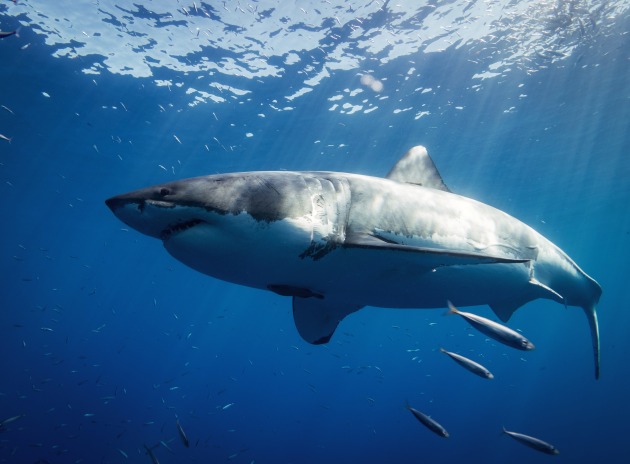



For more amazing shark facts for kids, be sure to make the most of our printable shark fact files for KS1 and KS2.
Sharks are fish that can measure up to 32.8 feet and weigh up to 20.6 tons. They fall into a subclass of species called elasmobranchii, which means their skeleton is made from cartilage rather than bones. Sharks can also have up to seven gills at each side of their head, which is uncommon as most fish only have one.
Based on scientists' findings and examining fossilised teeth from sharks, they believe that sharks have been around for 400 million years - this means they've outlived dinosaurs! Today sharks have evolved hugely and there are approximately 1,000 species of sharks and rays, with new ones discovered every year.
Whale Sharks are one of the biggest species of fish on earth and can actually grow up to 55 feet - that's a big jump compared with dwarf lantern sharks that only measure up to eight inches.
Sharks are predators and have multiple rows of pointy teeth - did you know they fall out and routinely grow back on a routine basis?
There are around 1,000 different species of sharks, here are just a few:
Sharks are carnivores, most of their diet comes from fish and other sea mammals including dolphins and seals. However, some shark species have also been known to eat turtles, seagulls, krill and plankton. When sharks are hunting for their prey, they use their lateral line system. They use this to help them detect water movements, which can be great during the night when visibility is poor.
A shark's habitat can be found in deep and shallow oceans throughout the world's oceans. Some sharks migrate far distances to breed and find food. You can find a shark habitat in all five of the Earth's oceans including the Atlantic, Pacific, Indian, Arctic and Southern. They can also be found in freshwater lakes and some rivers.
Over time sharks have been able to adapt to living in a range of aquatic environments including shallow waters and different temperatures as well as coastal regions too. Some inhabit locations close to the ocean floor, whereas others like the open space.
Surprisingly, one of the main threats that sharks face is human beings. Overfishing has seen drastic declines in sharks over the years. It's estimated that around 100 million sharks are killed each year, they’re mostly killed for an extravagant dish served in China called Shark fin soup. Another problem is rising water temperatures and coastal developments, as they're destroying mangroves and coastal reefs. These are important for sharks as they use them for breeding, hunting and protecting young shark pups.
As sharks drop in numbers, this is bad for the ocean's health because sharks are top predators, therefore they ensure a balanced food web.
Shark attacks are very rare, it's estimated that a person visiting the beach has only one in 11.5 million chances of being bitten. Humans don't interest sharks; they only bite or attack if they feel threatened or attacked, or sometimes they can confuse humans with prey.
Since 1900 shark attacks have increased, but this is down to our systems for recording attacks being more advanced and thorough.

32% of sharks are classified as threatened, 6% endangered, 26% vulnerable and 24% are near-threatened.
But, why are sharks important?
Some shark species reproduce by laying eggs, whilst others give birth to their young. In some cases, some have placentas, just like human babies. In cases where there is no placenta, the shark embryos get their nutrition from a yolk sac or an unfertilised egg filled with yolk.

Here at Twinkl, we have a range of resources to help support and transform your teaching. They’ve all been designed by our experienced teachers, so you can rest assured they are all in line with curriculum aims.
Try these resources for a great starting point